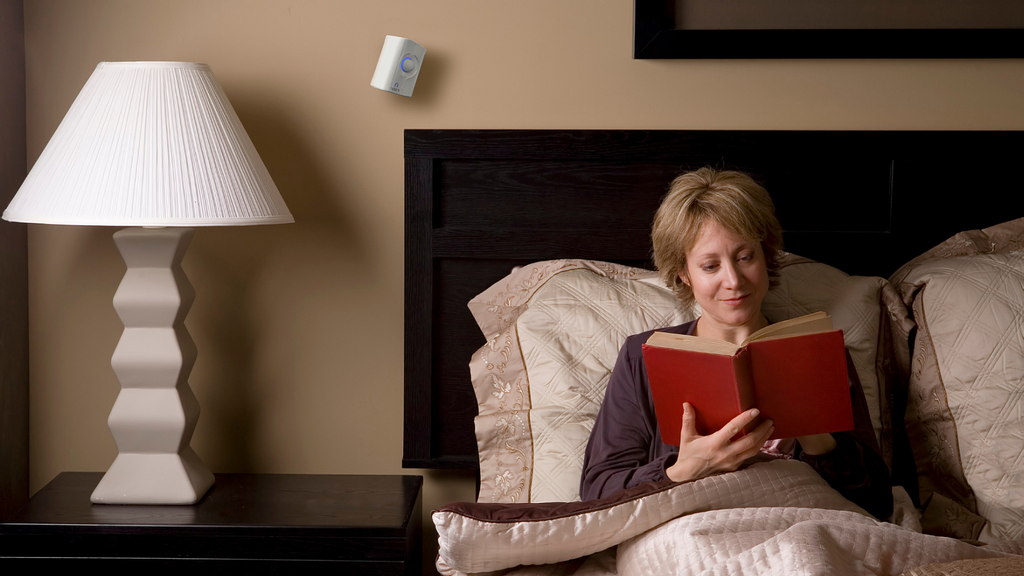
Safeguarding Japan’s Aging Society Without Invading Privacy
Old Japanese couple walking at a bus stop with umbrella during a rainy day, Shibuya, Tokyo on July 4th, 2018. SHUTTERSTOCK
|
Getting your Trinity Audio player ready...
|
Japan is desperately seeking technological solutions to monitor home health and safety in its “super-aged” society — the oldest in the world, with 28.7% of Japanese citizens aged 65 or older. By 2036, they’ll make up a third of the population, and there will be fewer young people to care for them.
Japanese-American company Nozomi MedAlliance found a promising answer to the problem in a startup in northern Israel and is supporting its journey to commercialization.
SenterCare is developing an adaptive AI-based behavioral monitoring system that uses sensors and software to monitor the elderly in a personalized, non-intrusive way.
“We’re a decision support system, not a diagnostic system. It’s about noticing changes, deterioration or an unusual pattern of behavior,” explains CEO Ronny Sthoeger.
Founded in 2020 as a collaboration between home medical and assistance services provider Natali Healthcare Solutions and the Trendlines Innovation Labs, SenterCare enables professionals to provide data-based preventive care and proactively understand when clients need intervention rather than waiting for an emergency call.
Nozomi CEO Shungo Adachi said, “SenterCare’s technology addresses concerns of privacy and ease of use raised by other at-home monitoring systems and presents an ingenious solution to allow Japan’s elderly to age in place with peace of mind.”

There are many solutions for monitoring the elderly already on the market, says Sthoeger, but each has limitations or drawbacks that SenterCare strives to avoid.
Camera- and microphone-based systems raise many privacy concerns and have limited coverage. People don’t want these systems in their bedroom or bathroom.Monitoring systems based on motion sensors cannot distinguish one person from another and are often activated by the motion of a visitor, a pet or even a curtain being blown by the breeze. “Anytime anyone walks into the house, these systems get confused,” says Sthoeger.
“We use our own three kinds of proprietary sensors that use different technologies from heavy industries and automated vehicles, incorporated into the home environment. Our system maintains privacy while differentiating among different people in the house,” says Sthoeger.
“We can monitor two people separately according to their different needs and alert about them differently. This allows our data to be more reliable and the system to be more comprehensive; sensors can be put in bathrooms and bedrooms without compromising privacy.”
Not only is SenterCare free of cameras and microphones but it’s also not a wearable device. Research shows that 80 percent of the elderly don’t put on their wearable monitors, she says.
Sthoeger adds that radar-based solutions — such as ECHO from Israeli company EchoCare Technologies, which also has been tested in Japan – currently cannot differentiate between people but could potentially be complementary to SenterCare’s sensor-based product.
Learning about end customers
Following development at its lab in Misgav, the prototype SenterCare system was installed in several elderly housing units as a pilot.
“We also did pilots in homes of younger people and we saw – as we had expected – that elders have a much more fixed routine. That enables us to recognize anomalies after just a few weeks of the system being in place.”
These real-life installations helped SenterCare improve the product’s accuracy and provided information about the preferences of end customers and their caregivers that the company will take into consideration, such as the aesthetics of the product.
“There was often tension between the sense of security that the system gave family members and the elder’s privacy concerns,” Sthoeger adds. “We had long conversations with the end customers assuring them that their privacy is not invaded and that no voice or video is recorded.”
The SenterCare solution was planned originally for the home environment so that people can age in place. However, says Sthoeger, “it also fits independent living and all varieties of senior housing, which are gaining popularity in Japan.”
Aging in place
Possible partners for SenterCare in Japan include a consumer electronics company, healthcare-related organizations and home security and housing companies that would like to integrate these solutions in the housing they offer the elderly, says Sthoeger.
“In Japanese culture there is much respect for the elderly and they also love trying new technologies. So they’ve been on the lookout for technological solutions to help with the aging problem,” she says.
Countries in Europe and South America that are also experiencing a boom in the aging population have expressed interest in SenterCare’s product as well, says Sthoeger, especially with today’s emphasis on aging in place.
The product has obvious relevance to the US market too. “In large countries like the United States, the distances are huge and so remote monitoring becomes more important,” she points out.
“We see more and more financial coverage in the US for these kinds of systems, meant to encourage preventive care and aging in place that at the end reduce overall health expenditure.”
Produced in association with ISRAEL21c
“What’s the latest with Florida Man?”
Get news, handpicked just for you, in your box.



